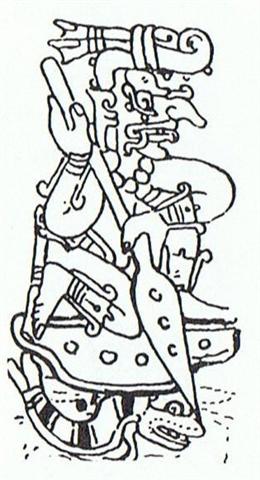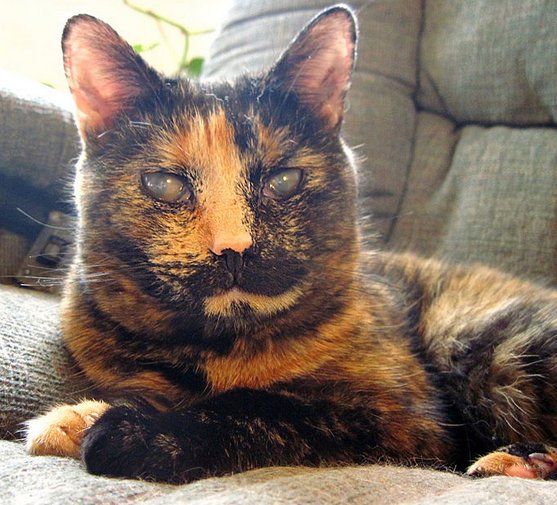The Tahitian 'pillar of exit' was Phakt (α Columbae), their 9th station. Its name (Ana-iva, 9th pillar) could have alluded to Hiva.
... Away flew Maui in his pigeon shape, with his brothers admiring him as he went. But as soon as he was out of sight he wheeled about, and flew to the clump of rushes that marked the place where his mother disappeared. He came down, in his noisy pigeon way, and strutted about for a moment. Then he lifted the rushes. He flopped into the hole and replaced the clump behind him, and was gone. A few strokes of his wings took him to that other country, and soon he saw some people talking to one another on the grass beneath some trees. They were manapau trees, a kind that grows in that land and nowhere else. Maui flew down to the tops of the trees and, without being noticed by any of the people, perched on a branch that enabled him to see them. Almost at once he recognized Taranga, sitting on the grass beside her husband, a man who by his dress and demeanor was plainly a chief. 'Aha,' he cooed to himself, 'there are my father and my mother just below me.' The 8th Tahitian station (Ana-varu) came 5 days later and reading on side a we can imagine a pair of canoe hulls and a king with a tall neck apparently immobilized (Ga1-24). 8 comes before 9, which might be a sign of time here in some way running backwards, for instance referring to a return home to Hiva.
December 19 was 273 days after 0h and Nash at the Full Moon should have indicated how the old generation was here finished (in the winnowing basket) at the same time as a newborn generation in a cradle. ... The winnowing-fan (λίκνον [líknon], also meaning a 'cradle') featured in the rites accorded Dionysus and in the Eleusinian Mysteries: 'it was a simple agricultural implement taken over and mysticised by the religion of Dionysus', Jane Ellen Harrison remarked. Dionysus Liknites ('Dionysus of the winnowing fan') was wakened by the Dionysian women, in this instance called Thyiades, in a cave on Parnassus high above Delphi; the winnowing-fan links the god connected with the mystery religions to the agricultural cycle, but mortal Greek babies too were laid in a winnowing-fan. In Callimachus' Hymn to Zeus, Adrasteia lays the infant Zeus in a golden líknon, her goat suckles him and he is given honey. In the Odyssey, the dead oracle Teiresias tells Odysseus to walk away from Ithaca with an oar until a wayfarer tells him it is a winnowing fan, and there to build a shrine to Poseidon ... TAGAROA URI 25 was day 273, which corresponds to the day number for the last day of September. In a way Land ended here and canoes would have been necessary in order to move on. But then we could be at the beginning again:
By the way: The ua could have served as a Sun gnomon (a staff like Te Pou, Sirius)
while the dance paddles (ao, rapa) could have been useful when looking at the stars close to the Full Moon - the blade hiding the shining full moon face which otherwise would have made the stars difficult to observe.
... λ and the two stars phi furnish an easy refutation of the popular error as to the apparent magnitude of the moon's disc, Colas writing of this in the Celestial Handbook of 1892: In looking at this triangle nobody would think that the moon could be inserted in it; but as the distance from λ to φ¹ is 27', and the distance from φ¹ to φ² is 33', it is a positive fact; the moon's mean apparent diameter being 31' 7''. This illusion, prevalent in all ages, has attracted the attention of many great men; Ptolemy, Roger Bacon, Kepler, and others having treated of it. The lunar disc, seen by the naked eye of an uninstructed observer, appears, as it is frequently expressed 'about the size of a dinner-plate', but should be seen as only equal to a peppercorn ... Ua means rain and this was a scarce resource on Easter Island. From April 25 (115) the Chorti were preoccupied with helping the Sky to move up and they would continue to do so until their wished for rains were arriving. ... It was 4 August [day 216 = 115 + 101] 1968, and it was the feast day of Saint Dominic, patron of Santo Domingo Pueblo, southwest of Santa Fe. At one end of the hot, dusty plaza, a Dominican priest watched nervously as several hundred dancers arranged in two long rows pounded the earth with their moccasined feet as a mighty, collective prayer for rain, accompanied by the powerful baritone singing of a chorus and the beat of drums. As my family and I viewed this, the largest and in some ways the most impressive Native American public ceremony, a tiny cloud over the Jémez Mountains to the northwest got larger and larger, eventually filling up the sky; at last the storm broke, and the sky was crisscrossed by lightning and the pueblo resounded with peals of rolling thunder. |
|||||||||||||||||||||||||||||||||||||||||||||||||||||||||||||||||||||||||||||||||||||||||||||||||||||||||||||||||||||||||||||||||||||||||||||||||||||||||||||||||






